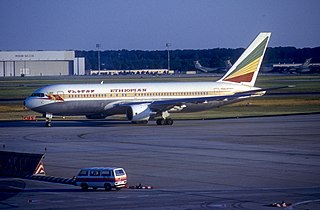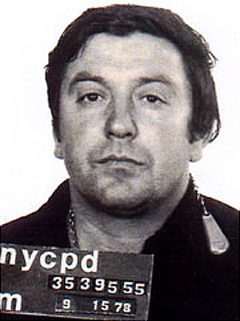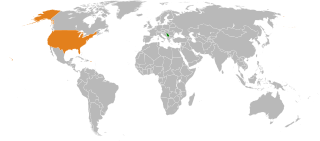This is a list of aviation-related events from 1980.
Jat Airways was the national flag carrier and largest airline of Yugoslavia and later Serbia and Montenegro and Serbia. Founded in 1927 as Aeroput, the airline ceased operations during World War II. After resuming flights in 1947, the airline was renamed Jugoslovenski Aerotransport on 1 April 1947. The airline was renamed again on 8 August 2003. Jat Airways and their predecessors were one of the oldest airlines still in operation. Flight operations were based at Belgrade Nikola Tesla Airport, and the airline operated scheduled services to 72 international destinations, outside the areas formerly part of Yugoslavia, as well as charters and wet leases. Jat Airways was owned by the government of Serbia and had 1,250 employees.

Ethiopian Airlines Flight 961 was a scheduled flight serving the route Addis Ababa–Nairobi–Brazzaville–Lagos–Abidjan. On 23 November 1996, the aircraft serving the flight, a Boeing 767-200ER, was hijacked en route from Addis Ababa to Nairobi by three Ethiopians seeking asylum in Australia. The plane crash-landed in the Indian Ocean near Grande Comore, Comoros Islands, due to fuel exhaustion; 125 of the 175 passengers and crew on board, including the three hijackers, died. This is the first recorded instance of a partially successful ditching utilizing a wide-body aircraft.
This is a list of aviation-related events from 1970.
This is a list of aviation-related events from 1972.
This is a list of aviation-related events from 1971.
This is a list of aviation-related events from 1976.
This is a list of aviation-related events from 1979.
This is a list of aviation-related events from 1999.

Boško Radonjić was a Serbian mobster, former leader of the Westies, a predominantly Irish-American gang based in New York's Hell's Kitchen.
Nikola Kavaja was a Serbian anti-communist dissident and terrorist. Known as the "Tito Hunter", due to his repeated assassination attempts on Yugoslav President Josip Broz Tito. Kavaja served 18 years in prison in the United States for the hijacking of American Airlines Flight 293.

Relations between Serbia and the United States were first established in 1882, when Serbia was a kingdom. From 1918 to 2006, the United States maintained relations with the Kingdom of Yugoslavia, the Socialist Federal Republic of Yugoslavia (SFRY), and the Federal Republic of Yugoslavia (FRY), of which Serbia is considered shared (SFRY) or sole (FRY) legal successor.

Deyan Ranko Brashich was a Serbian-American attorney, author, and columnist.
This article includes information on terrorist acts and groups in or against the Kingdom of Yugoslavia (1918–45) and Federal Yugoslavia (1945–92). Many of the terrorist acts were carried out outside Yugoslavia against Yugoslav subjects. The post-war period until circa 1985 was marked by frequent terrorist attacks on Yugoslav institutions organized by extremist emigrant organizations. Between 1962 and 1982, they carried out 128 terrorist attacks against Yugoslav civilian and military targets.





